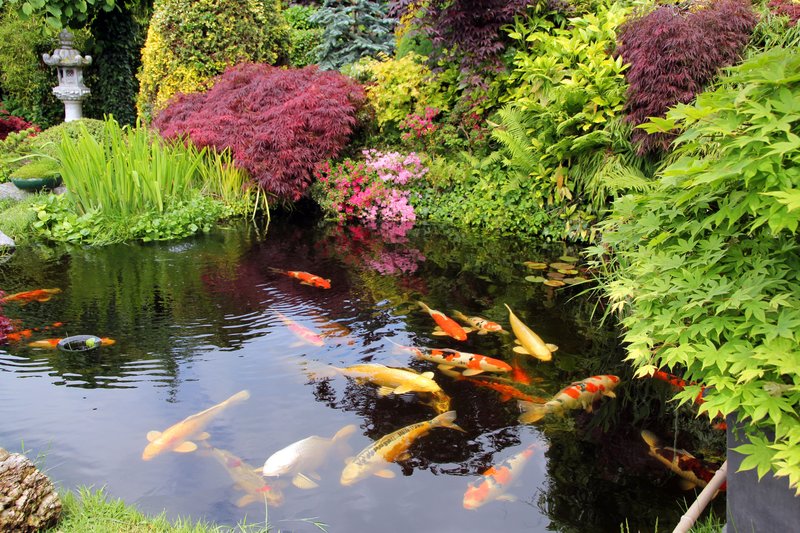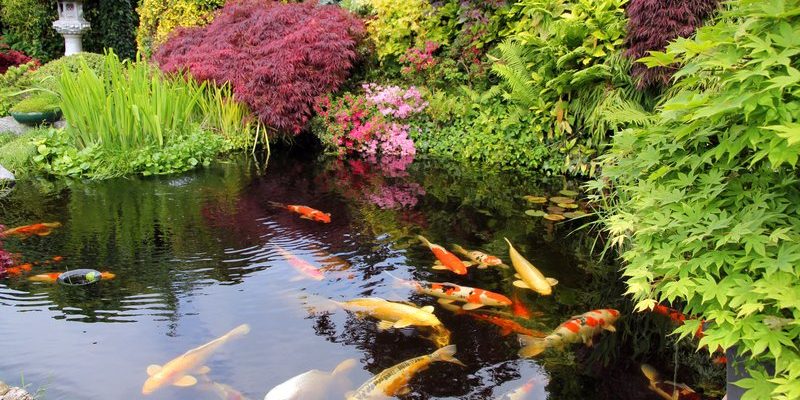
Now, before you dive in, let’s break down the essentials. You might think that raising koi is complicated, but it can be very manageable with the right knowledge. From choosing the right pond size to understanding koi care, every step matters. With a little guidance, you’ll be well on your way to becoming a koi keeper.
Choosing the Right Pond Location
Where you set up your pond can make all the difference. Ideally, you want a spot that receives plenty of sunlight but also has some shaded areas. Too much sun can heat the water, while too much shade might keep the water too cool. Look for a place where you can see the pond easily from your home, so you can enjoy the view and keep an eye on your koi.
Also, consider access to electric power and water sources. You may need a pump and a filtration system, and having these nearby makes installation much simpler. Lastly, avoid placing your pond near large trees, as falling leaves can introduce unwanted debris and organic material that could disrupt your pond’s balance.
Determining the Right Pond Size
The size of your pond is crucial for the health of your koi. As a rule of thumb, aim for at least 1,000 gallons of water. This amount allows enough space for your koi to swim and grow without crowding. If you’re planning to keep multiple koi, you may want to increase the size even more. Koi can grow quite large, often reaching lengths of 12-24 inches or more, depending on the type.
Here’s the thing: more space means better water quality. A bigger pond can help dilute toxins and maintain a healthier environment for your fish. Plus, koi are social creatures; they thrive in groups. So giving them ample room isn’t just a nice-to-have—it’s essential for their well-being.
Installing a Filtration System
A clean pond leads to happy koi. You’ll need a reliable filtration system to keep the water clear and free from harmful bacteria. There are different types of filters, including mechanical, biological, and UV filters. Mechanical filters remove debris, biological filters promote beneficial bacteria growth, and UV filters help control algae and pathogens.
When selecting a filtration system, make sure it’s appropriate for your pond size. A good rule of thumb is to choose a filter that can handle double the volume of your pond. For example, if your pond holds 1,000 gallons, look for a filter rated for 2,000 gallons. This gives your koi a better chance at a healthy life, as the water stays cleaner longer.
Understanding Koi Nutrition
Feeding your koi is more than just tossing in some fish food. Koi need a balanced diet to thrive, which includes proteins, vitamins, and minerals. Look for high-quality koi pellets, which are specially formulated to meet their dietary needs. During warmer months, when koi are most active, feed them two to three times a day. When it gets cold, you can reduce feeding, as their metabolism slows down.
It’s also good to supplement their diet occasionally with treats like vegetables (think peas or lettuce) or even fruits like watermelon. These snacks not only add vitamins but also help keep your koi engaged and happy. It’s like treating your pets to something special—just be sure not to overdo it!
Creating a Comfortable Environment
Koi are sensitive to changes in their environment, so keeping their habitat stable is key. The water temperature should stay between 65°F and 75°F for optimal health. You might want to invest in a heater for cooler months or a chiller for particularly hot summer days.
Additionally, maintaining a balanced pH level—ideally between 7.0 and 8.4—will help prevent stress among your fish. Regularly test the water quality using a simple test kit, which can help you address any issues before they become serious. Just remember, koi are as much about their environment as they are about their food!
Monitoring Koi Health
Keeping an eye on your koi means looking for signs of health issues. Healthy koi are active and have bright, vibrant colors. Watch out for signs like lethargy, unusual swimming patterns, or loss of appetite. If you notice any of these, it might be time to check your water quality or consult a vet specializing in fish.
Preventative measures help too. Regular water changes—about 10-20% weekly—can keep the pond balanced. Adding beneficial bacteria to the system can help maintain a healthy ecosystem as well. Also, make sure to feed them high-quality food, as poor nutrition can lead to various health problems.
Winter Care for Your Koi
As the seasons change, so do the needs of your koi. In areas where temperatures drop significantly, preparing your pond for winter is crucial. If your pond is shallow, consider moving your koi indoors if possible. If it’s deeper, ensure there’s a way for gases to escape by keeping a portion of the pond de-iced.
You might also want to stop feeding them as the water temperature falls below 50°F. Koi slow down their metabolism in cold weather, so they don’t need as much food. Just keep a close watch on them, and enjoy the tranquil beauty of your pond during the winter months.
In conclusion, raising koi in your backyard pond can be an incredibly rewarding experience. It’s not just about feeding fish; it’s about creating a balanced environment where they can thrive. By planning your pond’s location, size, and care routine, you’re setting yourself and your koi up for success. Dive in, enjoy the process, and watch as your aquatic paradise comes to life!

